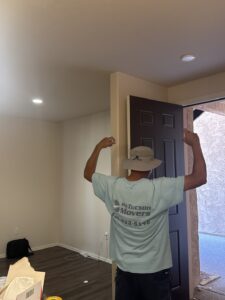Relocating to or within Tucson presents unique challenges and opportunities that distinguish it from moves in other cities. The desert climate, distinctive neighborhoods, and local regulations create specific considerations that can make or break your moving experience. Whether you’re transitioning from a downtown apartment to a foothills home or arriving from another state, understanding the nuances of Tucson moves will save you time, money, and stress.
Understanding Tucson’s Moving Landscape
The Greater Tucson area encompasses diverse neighborhoods, each with distinct characteristics that affect your relocation strategy. From the historic charm of the Armory Park District to the luxury communities in the Catalina Foothills, your moving approach must adapt to local conditions. The city’s sprawling layout means longer distances between neighborhoods, impacting everything from fuel costs to scheduling flexibility.
Tucson’s elevation of 2,400 feet and desert environment create specific challenges for household goods transportation. Electronics, wooden furniture, and sensitive items require special attention during the moving process. The intense summer heat, with temperatures regularly exceeding 110°F, makes timing crucial for protecting your belongings and ensuring crew safety.
Local regulations vary significantly across Tucson’s municipalities. Pima County, the City of Tucson, Oro Valley, Marana, and Sahuarita each maintain different permitting requirements for large moving trucks. Some residential areas have narrow streets or weight restrictions that limit access for standard moving vehicles, requiring alternative transportation methods.
Planning Your Tucson Move: Timeline and Preparation
Successful residential moves in Tucson require strategic planning that accounts for seasonal variations and local factors. Starting your preparation 8-10 weeks before your move date provides adequate time to address unique desert city challenges.
Begin by researching your destination neighborhood thoroughly. Tucson’s neighborhoods vary dramatically in character, amenities, and logistics. The University of Arizona area differs substantially from retirement communities like Green Valley or active adult neighborhoods in Oro Valley. Understanding your new area’s characteristics helps you pack appropriately and set realistic expectations.
Create a comprehensive inventory of your belongings, paying special attention to items that may be affected by heat or altitude changes. Desert conditions can cause wood to crack, leather to dry out, and electronics to malfunction if not properly protected. Document valuable items with photographs and receipts for insurance purposes.
Contact My Tucson Movers early in your planning process to secure your preferred moving date and discuss specific requirements for your situation. Professional movers familiar with Tucson’s unique challenges can provide valuable guidance on timing, packing strategies, and potential obstacles.
Choosing the Right Moving Season
Tucson’s climate creates distinct advantages and disadvantages for different moving seasons. Understanding these patterns helps you make informed decisions about timing your relocation.
Summer months (May through September) present the most challenging conditions for moving. Temperatures consistently exceed 100°F, creating health risks for moving crews and potential damage to heat-sensitive items. However, summer also offers some advantages: lower demand means better availability and potentially lower rates, and the dry conditions eliminate concerns about rain damage.
Winter months (December through February) provide the most comfortable temperatures for moving, with daytime highs typically in the 60s and 70s. This period sees increased demand from snowbirds and retirees relocating to Tucson, potentially affecting availability and pricing. The pleasant weather makes this the ideal time for moves involving valuable or delicate items.
Spring (March through April) and fall (October through November) offer balanced conditions with moderate temperatures and reasonable availability. These shoulder seasons often provide the best combination of weather, scheduling flexibility, and competitive pricing.
Packing Strategies for Desert Conditions
Packing for a Tucson move requires specific techniques to protect your belongings from heat, dust, and low humidity. Standard packing materials may prove inadequate in desert conditions, necessitating enhanced protection strategies.
Use climate-appropriate packing materials designed for extreme temperatures. Standard cardboard boxes can weaken in high heat, so consider reinforced options for valuable items. Plastic bins provide superior protection against dust and temperature fluctuations but can trap moisture if not properly ventilated.
Protect sensitive items with specialized techniques:
- Electronics: Remove batteries, use anti-static packing materials, and consider climate-controlled transportation for valuable equipment
- Wooden furniture: Apply protective coatings if possible, wrap in breathable materials to prevent cracking
- Artwork and photographs: Use acid-free materials and avoid plastic wrapping that can trap moisture
- Plants: Research Arizona’s agricultural regulations and consider professional plant transportation services
- Wine and beverages: Use insulated containers and avoid packing during peak heat hours
Create detailed inventory lists for each box, noting contents and destination room. Tucson’s sprawling layout means unpacking efficiently becomes crucial for settling in quickly. Label boxes clearly on multiple sides to facilitate placement in your new home.
Navigating Tucson Neighborhoods and Logistics
Each Tucson area presents unique logistical considerations that affect moving strategies. Understanding these challenges helps you prepare effectively and avoid surprises on moving day.
Downtown and Central Tucson: Historic neighborhoods often feature narrow streets, limited parking, and older infrastructure. Coordinate with your moving company to determine appropriate vehicle sizes and secure necessary permits. Many downtown buildings have specific loading dock requirements or restricted access hours.
Foothills and Mountain Communities: Elevated locations may require specialized equipment for steep driveways or difficult access points. Mountain communities often have HOA restrictions on moving truck hours and sizes. Plan for potential weather delays during winter months when higher elevations may experience different conditions than the valley.
Master-Planned Communities: Newer developments frequently have specific moving protocols, including registration requirements, designated moving hours, and elevator reservations for high-rise buildings. Contact HOA management companies well in advance to understand all requirements.
Rural and County Areas: Properties outside city limits may lack paved roads or have weight restrictions on bridges and roads. Septic systems, wells, and propane delivery access can affect moving truck placement and utility connections.
Legal Requirements and Documentation
Arizona state regulations and local ordinances create specific requirements for residential moves that differ from other states. Ensuring compliance protects you from potential legal issues and delays.
Moving companies operating in Arizona must maintain proper licensing through the Arizona Corporation Commission. Verify your chosen company’s credentials through the Arizona Corporation Commission website to ensure they meet state requirements.
Interstate moves involve federal regulations administered by the Federal Motor Carrier Safety Administration (FMCSA). Companies must provide specific documentation including estimate forms, bills of lading, and insurance information. Review all paperwork carefully and retain copies throughout the moving process.
Local permits may be required for large moving trucks in certain neighborhoods or for moves requiring street closures or parking restrictions. Contact appropriate city departments to determine permit requirements for your specific situation.
Cost Considerations and Budgeting
Tucson moving costs vary significantly based on timing, distance, services required, and specific neighborhood challenges. Understanding cost factors helps you budget accurately and avoid unexpected expenses.
Local moves within Tucson typically cost less than long-distance relocations, but unique factors can increase expenses. Difficult access, stairs, long carries from truck to home, and special handling requirements all affect pricing. Summer moves may cost less due to lower demand, but the trade-off includes increased risk to belongings and crew.
Additional services common in Tucson include:
- Climate-controlled transportation for sensitive items
- Extended coverage insurance for high-value belongings
- Professional packing services using desert-appropriate materials
- Storage solutions during transition periods
- Specialized handling for pool tables, pianos, and large appliances
Request detailed written estimates from multiple companies, ensuring all potential charges are clearly outlined. Reputable companies provide binding estimates that protect you from unexpected cost increases.
Utility Connections and Essential Services
Establishing utilities in your new Tucson home requires coordination with multiple providers and understanding of local service areas. Different neighborhoods may have varying utility companies and connection requirements.
Electricity: Tucson Electric Power (TEP) serves most of the metropolitan area, while some outlying areas use other providers. Schedule connection well in advance, especially during peak moving seasons when demand is high.
Water and Sewer: The City of Tucson provides water service to most urban areas, while county and private companies serve outlying regions. Some areas rely on private wells, requiring water quality testing and maintenance considerations.
Natural Gas: Southwest Gas provides natural gas service throughout most of Tucson. Many homes also use propane for certain appliances, requiring coordination with local propane suppliers.
Internet and Cable: Multiple providers serve Tucson, but availability varies significantly by neighborhood. Research options early, as installation appointments can be limited during busy periods.
Special Considerations for Tucson Moves
Certain aspects of Tucson living require special attention during the moving process. Understanding these factors helps ensure a smooth transition to desert life.
Home Cooling Systems: Tucson homes rely heavily on air conditioning systems that may require professional maintenance before move-in. Schedule HVAC inspections and tune-ups to ensure systems can handle immediate occupancy.
Pool and Spa Maintenance: Many Tucson homes include pools or spas that require immediate attention upon occupancy. Coordinate with pool service companies to ensure proper chemical balance and equipment functionality.
Desert Landscaping: Xeriscaping and desert plants require specific care and knowledge. Research proper maintenance techniques or arrange for professional landscaping services to maintain your new property.
Wildlife Awareness: Desert environments include various wildlife species that may affect moving and settling-in processes. Understanding local wildlife behavior helps you protect belongings and ensure safety during the transition.
Making Your Tucson Move Successful
The key to a successful Tucson move lies in thorough preparation, understanding local conditions, and working with experienced professionals who know the area. My Tucson Movers brings extensive knowledge of local challenges and proven strategies for overcoming them.
Start planning early, remain flexible with scheduling, and prepare for conditions unique to desert environments. With proper preparation and professional assistance, your Tucson move can be efficient, safe, and stress-free, setting the stage for enjoying all that this vibrant desert city has to offer.



